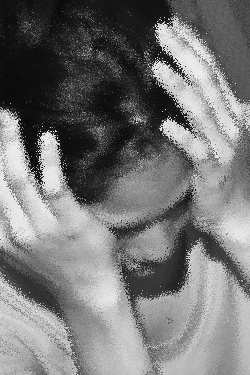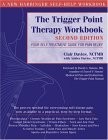Trigger Points: Identification, Myths, and Preparing to Fight them
This is the third in our series on mayofascial trigger points, headache, and migraine. We started with Trigger Points and headache – Fakery or Fact? Then we tried to figure out if they’re a factor when it comes to headaches and migraine with Trigger points – do they trigger headaches? (I know, I’m taking a long time to get through the series. But a significant amount of research is going in to this one!)
So what’s next? Well, we’re going to find out how to treat them, of course. But before we get into specifics (in the next post in the series), we’re going to get some background on trigger point treatment – things you need to know before you’ll see it really work for you.
Blasting Myths about Trigger Points
 |
First, let’s clear up some common myths about mayofascial trigger points (MTPs):
- Trigger points are not consistent. Some people think they always get them in the same pattern causing the same pain – sometimes there can be consistency, and there are patterns, but you can’t rely on them. Just when you think you have it figured out, something changes.
- MTPs are not always in the same location as your other symptoms. In other words, just because you have a headache in your temples, that doesn’t mean that the MTP is in your temple.
- You can’t necessarily feel a trigger point. Some people associate MTPs with muscles that feel "tight", or little "lumps" or "knobs" in muscle tissue. That could be a MTP, but some are small enough (or hidden enough) that you can’t feel them, but big enough to cause problems.
Are Trigger Points causing YOU problems?
Sometimes it’s very hard to tell. I’m willing to bet, however, that if you’re having any kind of consistent headache, or migraine attacks, or cluster headaches, that MTPs are a factor. Sometimes they’re a hidden factor, but other times they’re quite obvious. When they are more obvious:
- Part of your muscle is intensely sensitive when moderate pressure is applied
- Pressing on some MTPs make the muscle twitch
- You might feel muscle "tightness"
- The pain you feel when applying pressure on the trigger point may be "good pain" – in other words, it hurts, but feels like something that is "needed"
- Your body often makes more "noise" where trigger points are – such as popping, crunching noises
- Your muscles feel tired and heavy, or stiff, or there is a dull, nagging pain
- Heat makes it feel better
On the other hand, if the pain is due to a recent injury, or it comes on suddenly, it’s extremely sensitive to light pressure, the muscle is sore all over, or you have consistent sharp pain – that’s probably not a trigger point (and may be a reason to see your doctor!).
You should especially see your doctor if you have pain that is consistently getting worse and worse. Trigger points tend to come and go, or stay the same.
How to make Trigger Points worse
We’ll talk more about the practical side of treating trigger points in the next article. But today, let’s see a few things that can make the problem worse, and stop treatment from being as effective as it could be.
- Not dealing with stress. If you’re letting yourself get stressed-out, this could make MTPs flare up
- Shallow breathing. Deep breathing from time to time can help keep MTPs away.
- Awkward positions. Especially those you stay in for a long time. Weird sleeping positions, sitting standing…
- Actually, staying in one position for a long time, even if it’s not awkward.
- Muscle relaxants. Actually, they don’t make the situation worse so much, they just don’t help.
- Over exertion. Over exercising, or trying to do something that’s just over the top.
- Not treating another problem. Yes, treating trigger points may help cut down your migraine attacks. However, you will likely still need to treat migraine itself, especially if you’re in a bad cycle. You may need to break the cycle first, then in the future trigger point therapy may be all you need. This goes for any headache or condition that may cause a pain cycle, or make your MTPs worse.
- One more great way to make MTPs worse. Don’t be flexible in your treatment. Learn one way from Uncle Joe, then stick to it forever, no matter what your body is telling you.
Coming up…
What if I told you that trigger point therapy is better than Botox? Many of you know that Botox has become a treatment for more than wrinkles. Some migraine patients have found that it helps (more on Botox for migraine).
The amazing thing about Botox is that it kills MTPs – temporarily. Sounds great, right?
Well, it’s pretty good for that one trigger point. But MTPs that are setting off your headaches or migraine attacks could be almost anywhere on your body – and it’s different for everyone! An invasive procedure, such as a Botox treatment, is still a lot of guesswork when it comes to an individual. You’re only treating a few specific locations.
Mayofascial Trigger Point therapy has some advantages. You can treat more areas with a less invasive treatment. You can learn over time where the offending MTPs are.
And best of all, it’s usually a lot cheaper. Very often you can do trigger point therapy all by yourself!
And that’s what we’re going to look at in the next article – how to start knocking out those trigger points on your own, to cut back on those headaches and migraine attacks.
Once again, this information comes from a variety of sources, but I’m especially indebted to Trigger Point Therapy for Headaches & Migraines: Your Self-Treatment Workbook for Pain Relief by Valerie Delaune and Save Yourself from Trigger Points and Myofascial Pain Syndrome! by Paul Ingraham.



